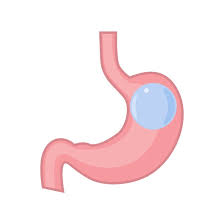Understanding Endoscopic Intragastric Procedures
Endoscopic Intragastric procedures are minimally invasive treatments designed to aid in weight loss by modifying the stomach’s capacity. These procedures involve the placement of devices or performing techniques that reduce stomach size, thereby limiting food intake and promoting weight loss. Endoscopic Intragastric procedures are increasingly popular due to their lower risk and shorter recovery time compared to traditional bariatric surgeries.

How Does Endoscopic Intragastric Work?
Endoscopic Intragastric procedures work by altering the stomach’s structure through endoscopic means. This can include the insertion of a balloon, suturing techniques, or other devices that reduce the stomach's volume. By doing so, patients feel fuller with less food, which helps in reducing caloric intake and promoting gradual weight loss.
Who is the Ideal Candidate?
BMI and Weight Considerations
The primary candidates for Endoscopic Intragastric procedures are individuals with a Body Mass Index (BMI) of 30 to 40 who have been unable to achieve significant weight loss through diet and exercise alone. Those who are overweight or mildly obese and do not qualify for traditional bariatric surgery may find this procedure particularly beneficial.
Health Conditions
Candidates who have weight-related health conditions such as type 2 diabetes, hypertension, or sleep apnea but do not meet the criteria for more invasive surgeries may be considered for Endoscopic Intragastric procedures. These procedures can help manage these conditions by facilitating weight loss.
Age and Overall Health
Ideal candidates are typically adults between 18 and 65 years of age who are in relatively good health. Those with severe health issues, such as advanced heart disease or uncontrolled diabetes, may not be suitable for the procedure. A thorough medical evaluation is necessary to determine eligibility.
Commitment to Lifestyle Changes
Endoscopic Intragastric procedures require a commitment to long-term lifestyle changes, including a healthy diet and regular exercise. Candidates must be willing to follow post-procedure guidelines to ensure the best possible outcomes.
Who May Not Be a Suitable Candidate?
History of Gastrointestinal Issues
Individuals with a history of gastrointestinal disorders, such as Crohn’s disease, severe reflux, or previous stomach surgeries, may not be suitable for Endoscopic Intragastric procedures. These conditions can complicate the procedure or interfere with its effectiveness.
Psychological Conditions
Candidates with untreated eating disorders, severe depression, or other psychological conditions that could impair their ability to follow the post-procedure guidelines may not be ideal candidates. Psychological evaluation is often part of the candidacy assessment.
Pregnancy and Future Plans
Pregnant women or those planning to become pregnant in the near future are not suitable candidates for Endoscopic Intragastric procedures. The physical changes and nutritional requirements during pregnancy may be incompatible with the effects of the procedure.
Preparing for the Procedure
Initial Consultation and Assessment
Before undergoing an Endoscopic Intragastric procedure, candidates will undergo a comprehensive consultation and assessment. This includes a review of medical history, a physical examination, and possibly additional tests to ensure that the patient is a good candidate.
Pre-Procedure Guidelines
Candidates will be given specific pre-procedure guidelines, which may include dietary restrictions, cessation of certain medications, and lifestyle adjustments. Following these guidelines is crucial to minimize risks and improve the success rate of the procedure.
Post-Procedure Expectations
Recovery and Follow-Up Care
The recovery time for Endoscopic Intragastric procedures is generally short, with most patients returning to normal activities within a few days. However, regular follow-up care is essential to monitor progress and address any potential complications.
Long-Term Commitment
Successful weight loss and maintenance following Endoscopic Intragastric procedures require a long-term commitment to a healthy lifestyle. Patients must adhere to prescribed dietary and exercise regimens to sustain the benefits of the procedure.
Conclusion
Endoscopic Intragastric procedures offer a viable weight loss solution for individuals who do not qualify for traditional bariatric surgery but still need help managing their weight. Ideal candidates are those with a BMI of 30 to 40, who are in good overall health, and are committed to making the necessary lifestyle changes. A thorough medical and psychological evaluation is essential to determine eligibility and ensure the best outcomes from this innovative, minimally invasive procedure.

